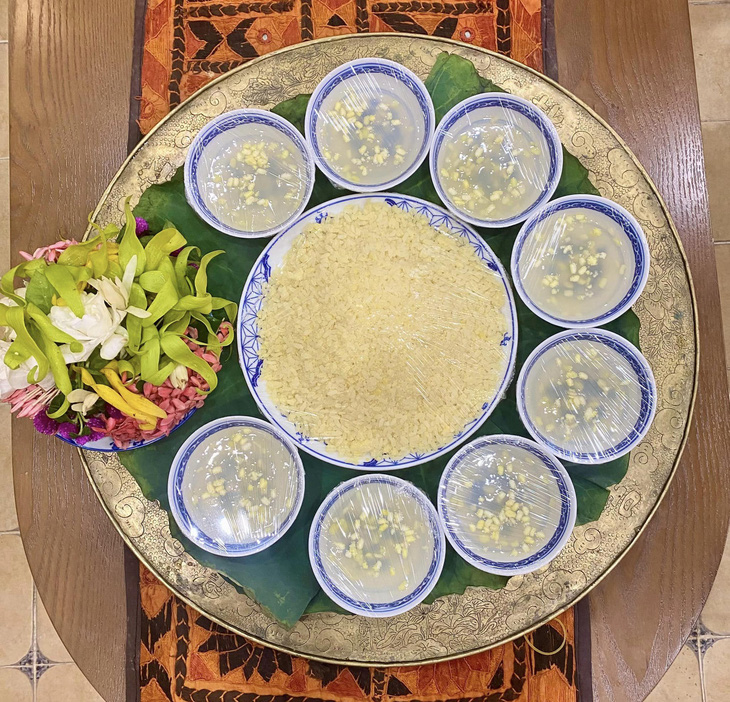
Raspberry and sweet soup Hanoi style
July is the most special month because of Vu Lan festival and the Ghost Festival. During this season of filial piety, many families prepare vegetarian dishes and abstain from killing.
Journalist Vinh Quyen - one of the admins of the group Ha Thanh huong xua vi cu (more than 15,000 members) - said that after a feast, dessert is always xoi vo and che duong (che hoa cau). The combination of these two dishes is really skillful, one of the special features of Hanoi.
Sticky rice with sweet soup is only available in Hanoi.
Ms. Quyen said the bowl of sweet soup looked rustic and simple but still sophisticated.
But it seemed simple, but it turned out not to be. For the past few days, she has been riding her motorbike to famous sweet soup shops in Hanoi to find the sweet soup that she remembered but failed. So the woman from Hanoi has been busy in the kitchen and remembering the old days.
Before, her grandmother often cooked sweet soup with sugar or rock sugar.
When adding tapioca starch, stir in one direction until the water is clear. Add enough beans because Hanoians eat for fun, not to fill their stomachs.
Culinary expert Nguyen Phuong Hai added: he has an "excessively fussy" grandmother. In the past, rock sugar often had threads or was dirty, so when cooking, she often filtered it through a muslin cloth. The same goes for processing tapioca starch and grapefruit flowers.
When everything was ready, she told her grandchildren to "sprinkle in a little bit of beans". The sweet dessert that Hai remembered in his memory absolutely did not have vanilla or shredded coconut like it does now. Each flavor had its own flavor.
Ms. Vu Thi Tuyet Nhung, author of the book series "Ha Thanh Huong Xua Vi Cu", tells a story that is perhaps considered a "discovery".
When cooking this dish, monk Dam Anh of Phung Thanh Pagoda uses tapioca starch, marinated with grapefruit or jasmine flowers. The tapioca starch is pure and the sweet soup is stirred thoroughly, so that the next day it is still sticky and thick, not rancid like sweet soup cooked in restaurants.
As for the sticky rice dish, Mr. Hai recalls, the people of Hanoi in the past often chose tangerine sticky rice or yellow flower sticky rice and green beans (small, fragrant, and flavorful green beans). For every 1kg of rice, there were 300g of beans. Being impatient, Ms. Nhung rarely cooked this dish. She "left" it all to her younger sister to do.
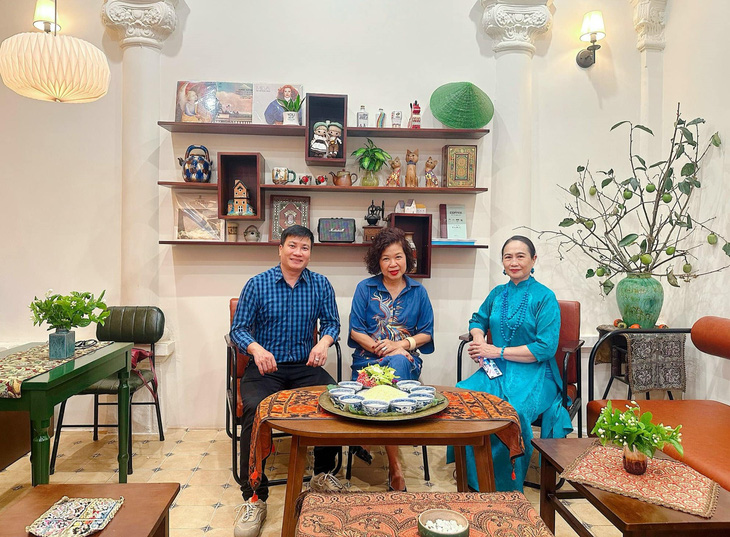
From left to right: expert Nguyen Phuong Hai, journalist Vinh Quyen, author Tuyet Nhung
Speaking of Master Dam Anh, he can be called "the ultimate kung fu master". Ms. Nhung said the sticky rice he cooked was soft, bouncy, and plump like a young bee, with fragrance from the rice to the bean layer covering the outside.
He once shared the "secret" to making delicious sticky rice. First, you have to sift the rice to remove the small grains so that the rice can be cooked evenly, avoiding some grains being cooked before others.
Then wash and soak overnight. Wash the beans thoroughly but do not soak for long. For every kilo of rice, add 1.5 ounces of galangal, of which 3/4 is sliced and added to the sticky rice, the rest is pounded to get the juice.
After steaming the sticky rice for the first time, take it out, sprinkle the remaining water on it, let it sit for 5 minutes, then spread it out, let it cool, and steam it again. If you only steam the sticky rice once, it will never be delicious.
Sticky rice with sweet soup is made from ingredients that are not very noble. But through the cooking method and the kind heart of Hanoians, it is elevated to a rare, unique and pure dish. When eating, you can feel the softness of the sticky rice, the richness of the beans, combined with the elegance of the sweet soup.
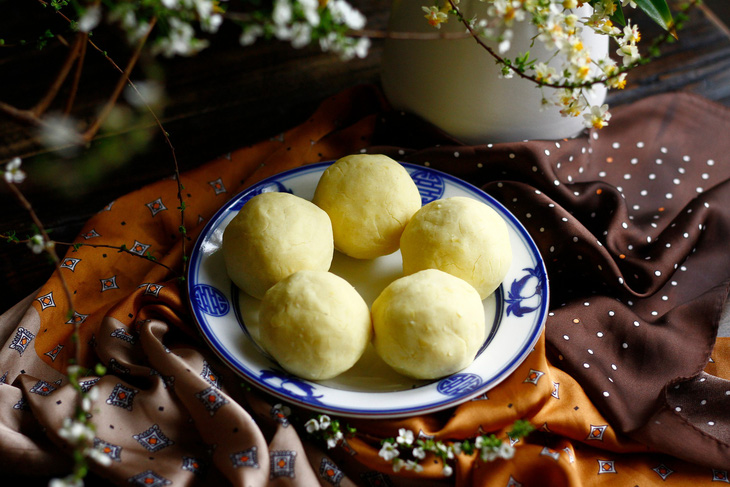
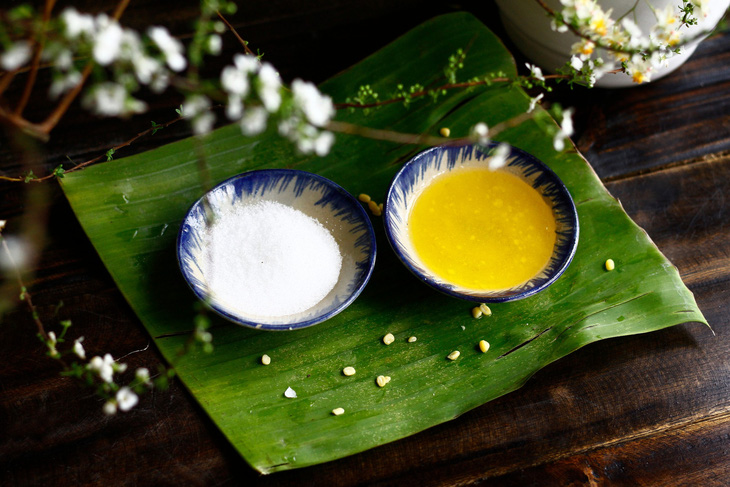
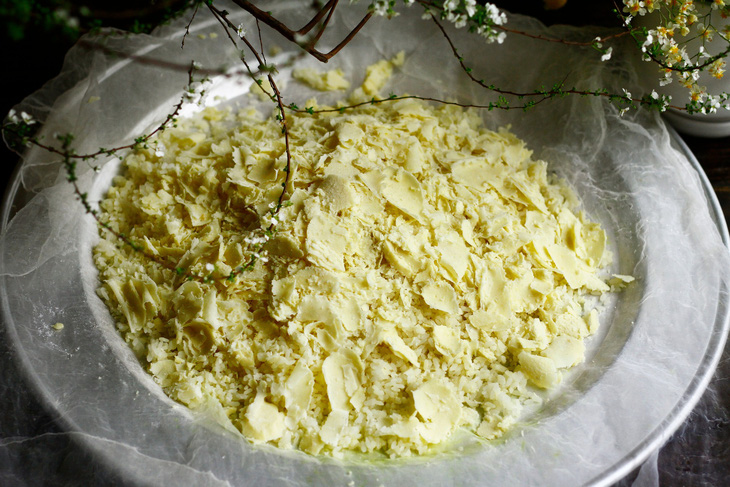
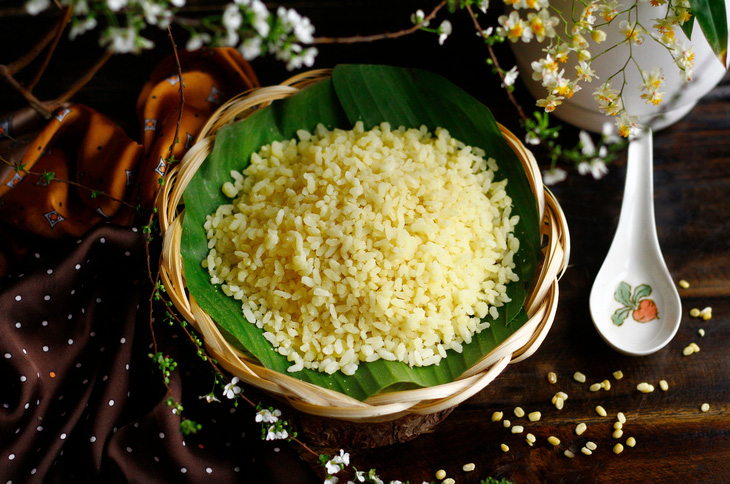
Not everyone makes delicious sticky rice - Photo: BUI THUY
The elders often call it sticky rice with sweet soup, but some people also call it sticky rice with areca flower sweet soup. In cooking, our elders are very good at using images to describe things easily. For example, sliced into pencils, sliced into strips, sliced into incense sticks, sliced into chess pieces... It is called areca flower sweet soup because the beans float in the bowl of sweet soup like areca flowers falling in the yard.
Expert Nguyen Phuong Hai
There is a national soul in it
Writer Le Phuong Lien's family home used to be on Hang Dau Street. Of all the offerings made during the year, Ms. Lien remembers the offering to the wandering souls in July the most. She also remembers the offering to the wandering souls in 1944-1945, when her mother cooked a large pot of porridge and brought it out to the street to feed the hungry.
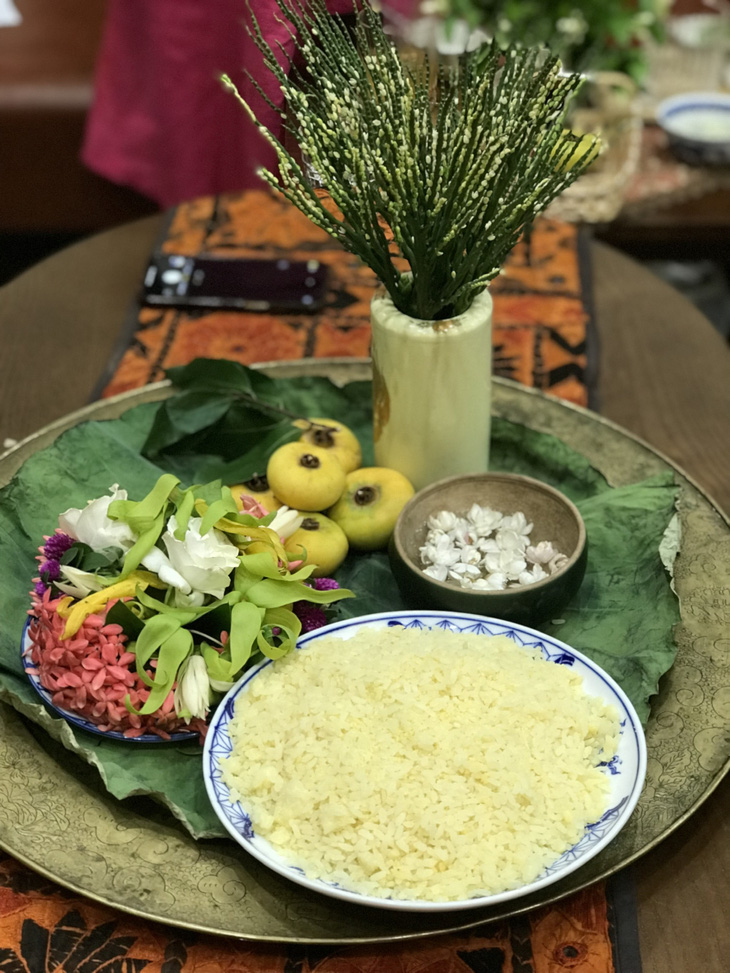
In July, sticky rice with sweet soup is an indispensable dish for Hanoians - Photo: D.DUNG
Later, every time she read Nguyen Du's "Elegy for Ten Kinds of Living Beings" : "The seventh month of the year is filled with drizzling rain/ The cold breeze chills the bones...", Ms. Phuong Lien misses her childhood so much.
A feeling of both sympathy and warmth crept up in my mind.
Mr. Hai shared something very special in the ceremony of atonement for the dead. When offering food to the dead, our people never leave it whole, but cut and divide everything into small pieces.
Fear that strong spirits will steal all the food from weaker spirits. Therefore, it must be divided into small portions so that everyone can have a portion, to be "warm" at least that day.
When I was a kid, my family and I used to fold paper clothes and distribute them evenly, along with a piece of paper money. The paper clothes were white, without any fancy decorations or embellishments. It was so much fun and memorable.
Two sacred festivals in life in July - a month that seems gloomy and unlucky but turns out to be strangely warm and humane.
There, besides the devotion and respect offered to grandparents and ancestors, we can also see the soul and character of a peaceful, generous and tolerant nation.
Interpreted delicately, without exaggeration, and passed down from generation to generation, the Vietnamese cultural sentiment has perhaps never ceased to be fascinating. July is more beautiful because of that.
Source: https://tuoitre.vn/xoi-vo-che-duong-goi-mua-vu-lan-ve-20240813100548928.htm
















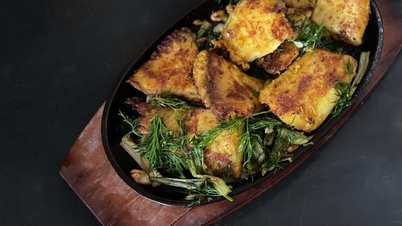

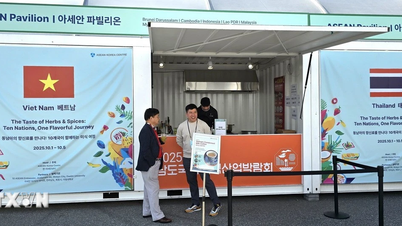


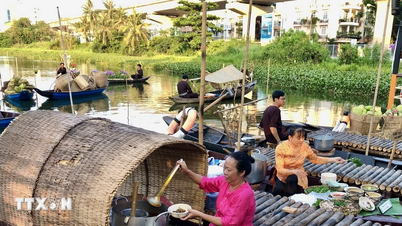
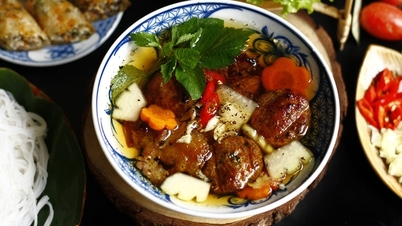
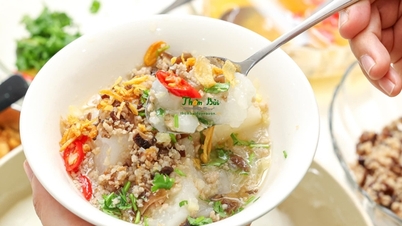
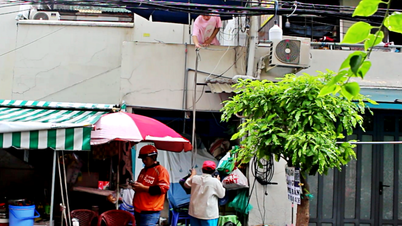








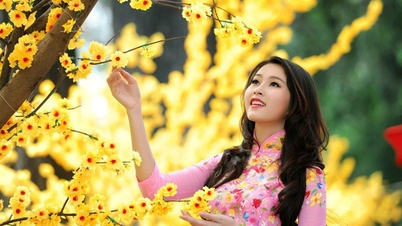















































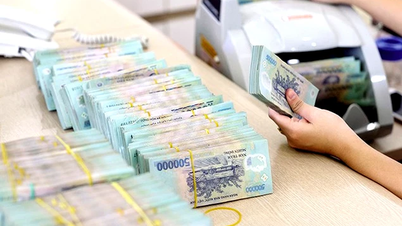

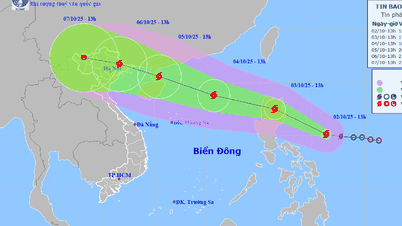
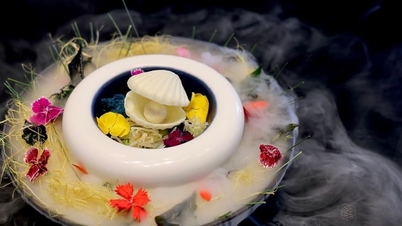





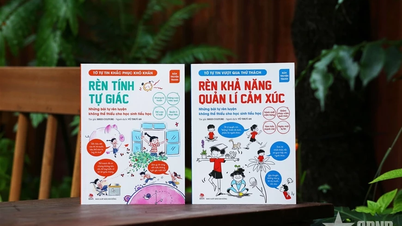













Comment (0)